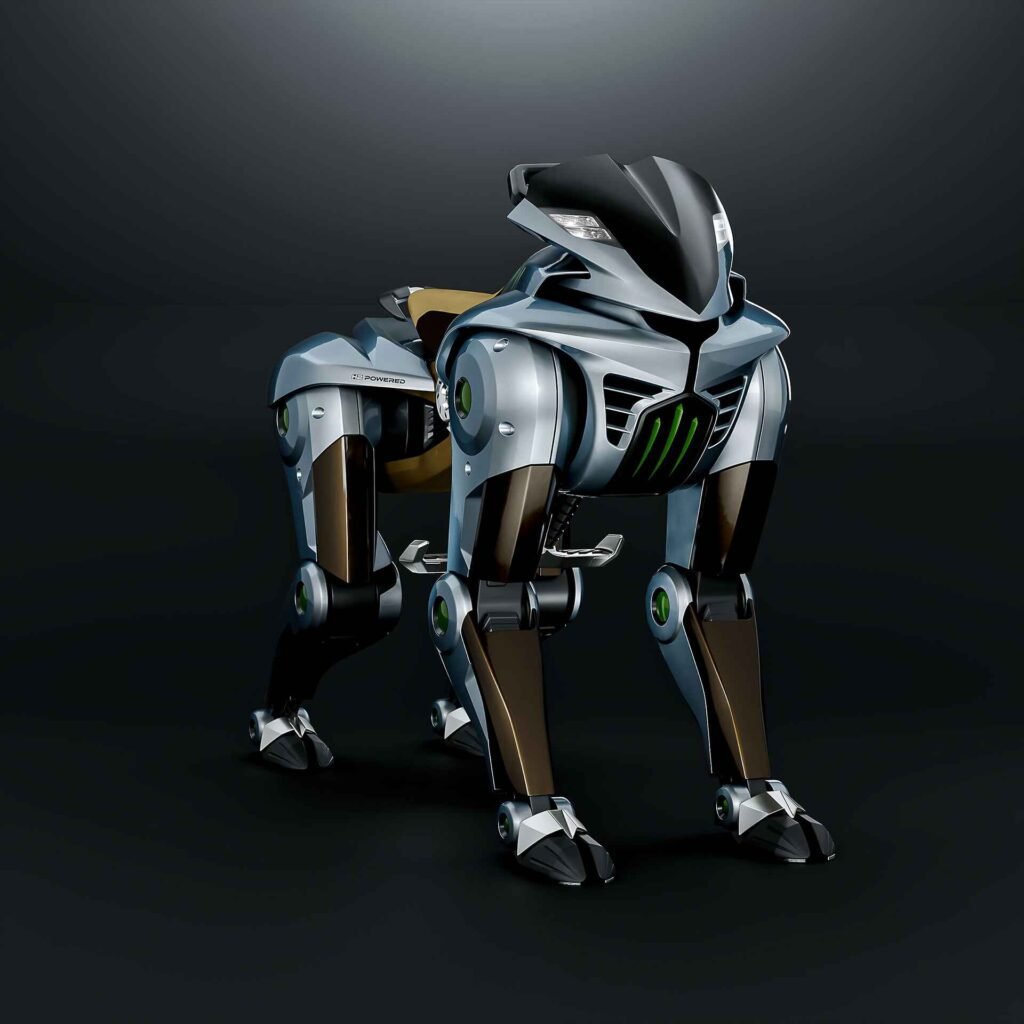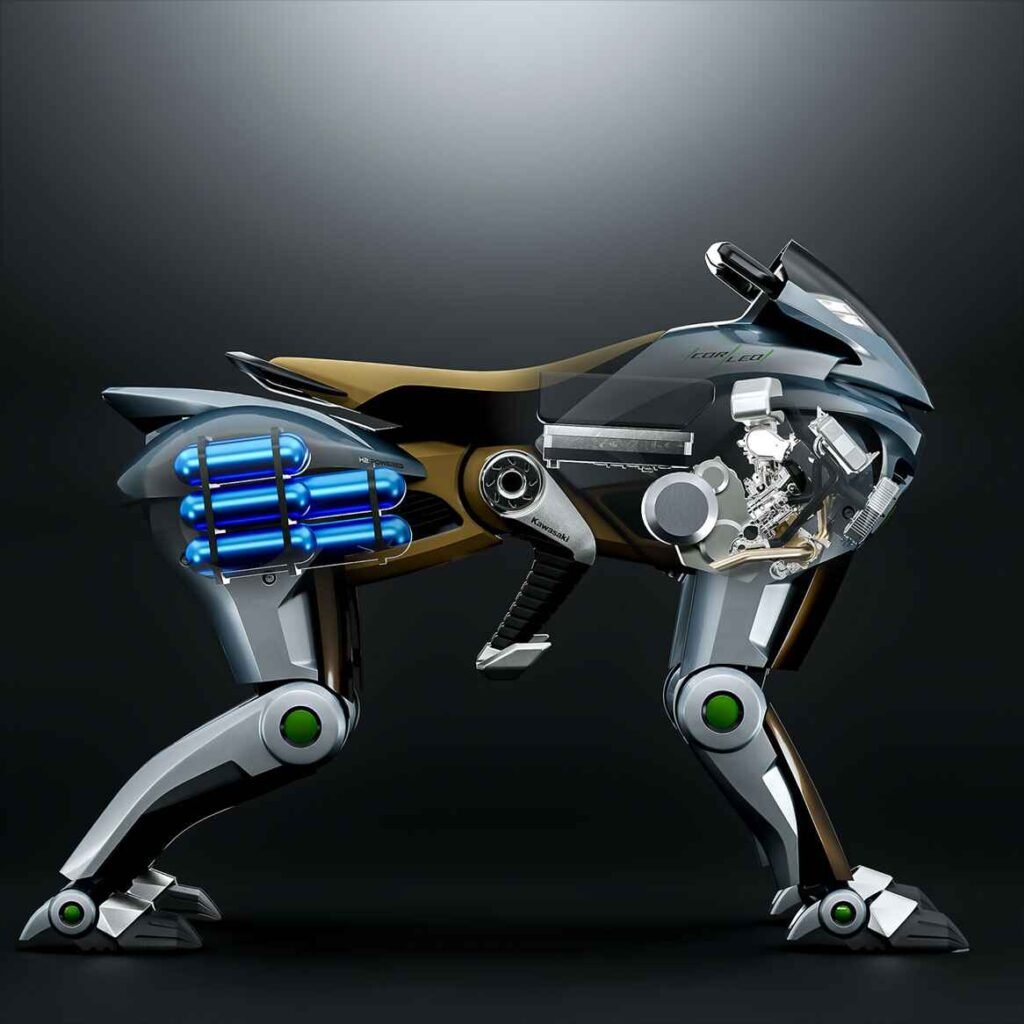Kawasaki Heavy Industries has introduced a bold new concept that looks like something from a sci-fi movie. Called the Corleo, this futuristic ride-on robot horse runs on hydrogen fuel and is built to tackle rough terrain using advanced AI and electric actuation.

Unlike a real horse, the Corleo requires no care, makes no mess, and won’t kick you off unexpectedly. Instead, it offers a sleek, high-tech alternative that produces nothing but clean water from its hydrogen-powered 150cc engine. There is even a hint that this water could be chilled and dispensed for riders during long journeys.
Revealed ahead of the Osaka Kansai Expo, the Corleo is part of Kawasaki’s vision for what transportation might look like in 2050. While it’s not a motorcycle, the company clearly leans on its engineering heritage to create something wild, agile, and experimental. This robot steed uses body movement to steer, making the riding experience intuitive and immersive. Its AI scans the path ahead, selecting safe spots to place each foot and adjusting dynamically to terrain changes.

Designed with serious off-road potential, Corleo’s split hooves have rubber treads for grip, and its rear legs feature extra joints for absorbing shock and increasing movement flexibility. Adjustable stirrups and a floating seat ensure a comfortable fit for various rider sizes, while also allowing room for a second person.
At the front, a small windscreen and a color dashboard suggest that high-speed travel might be part of the plan. In nighttime conditions, the robot projects arrows on the ground to show its intended path, enhancing rider confidence and navigation.

Although Kawasaki has only produced a static prototype and the current demo footage is purely computer-generated, the idea taps into growing excitement around robotic personal transport. While 2050 may be far off, companies around the world are already developing rideable robots. XPeng, for example, revealed a robotic unicorn for children in Bangkok last year, complete with a robotic tail capable of lifting small items.
Whether or not the Corleo ever becomes a mass-market product, it reflects the kind of creative, boundary-pushing thinking needed to imagine the next wave of mobility. Kawasaki might be dreaming big, but concepts like these help shape what the future could eventually look like.
















